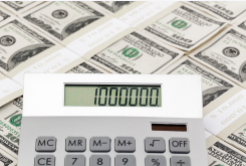by Sharon Danosky
I was with a client this morning, meeting with their Development Committee, reviewing the results from the last fiscal year. It was celebratory. They had just exceeded the $1 million mark in funds raised for general operations. This was a big deal.
What is even a bigger deal is that this is sustainable. It wasn’t a one-off; hooray we got that huge major gift that made the year. No, it has been steadily building; not a blip on the screen. And, better yet, there is every reason to believe that they will reach or even exceed that amount again next year.
When I began working with this client it was an organization that was heavy on events (as so many nonprofits are). It did one annual appeal letter a year. The retention rate was abysmal and stewarding a major donor – well I might have been speaking in a foreign language. Yet, over the course of a few years we steadily built a program that would grow and one that could be sustained. Here is a snapshot of how the program grew. When we began, the nonprofit was raising $400-$500,000 a year.
- We looked carefully at the donors they had. Who were giving larger gifts? Who were giving every year or every other year? Who were their constituents? And how were their constituents supporting them? We looked at what were the sustainable opportunities and let go of those that didn’t support building a constituency. We wanted to build a donor base that believed in the organization’s mission. If the fundraising activity didn’t pass that test, it was gone.
- We focused on retention. As is the case with most organizations, they were losing donors every year. It was a revolving door of new donors and lost donors. Rather than one appeal letter, we sent out several letters each year – reminding people who had not yet given to give once again. Events were focused on bringing people back and encouraging board members to bring people who would be interested in the organization and its mission, rather than just filling seats. The mission and stories about people who were better off were the consistent message. Within a couple of years, the constituency was growing. With people who cared about the mission.
- We began a modest stewardship program. At first it was simply a letter sent to all donors twice a year telling them how their contributions had been put to good use. When the organization was able to add a database manager, they included phone calls to every donor after they made a gift. Soon they were known in town as the nonprofit most grateful for a donor’s support.
- Then stewardship kicked into high gear. The President of the organization and Vice President of Philanthropy identified their top donors and started personally reaching out to them, visiting with them, inviting them in for tours. Within another year, they were able to bring on an individual to help with the stewardship of major donors, as well as reach out to prospective major donors.
Four years later it raised over $1 million. The costs were incremental; two positions replaced the expenditures spent on numerous events and mailings that yielded little in return. More important, these strategic positions now allow the organization to reach out to more donors which generates ongoing, sustainable support. In fact, two-thirds of their revenue is generated by the donors they personally steward. Most recently, the organization has just included stewardship of donors likely to leave a legacy gift.
None of this happened overnight. It was steady, deliberate growth. And that is the kind of growth that can be sustained. The organization is currently investing in donor acquisition. It is an investment worth making – because when they acquire a new donor they now know how to keep that donor. Sustainability. Worth the investment.
